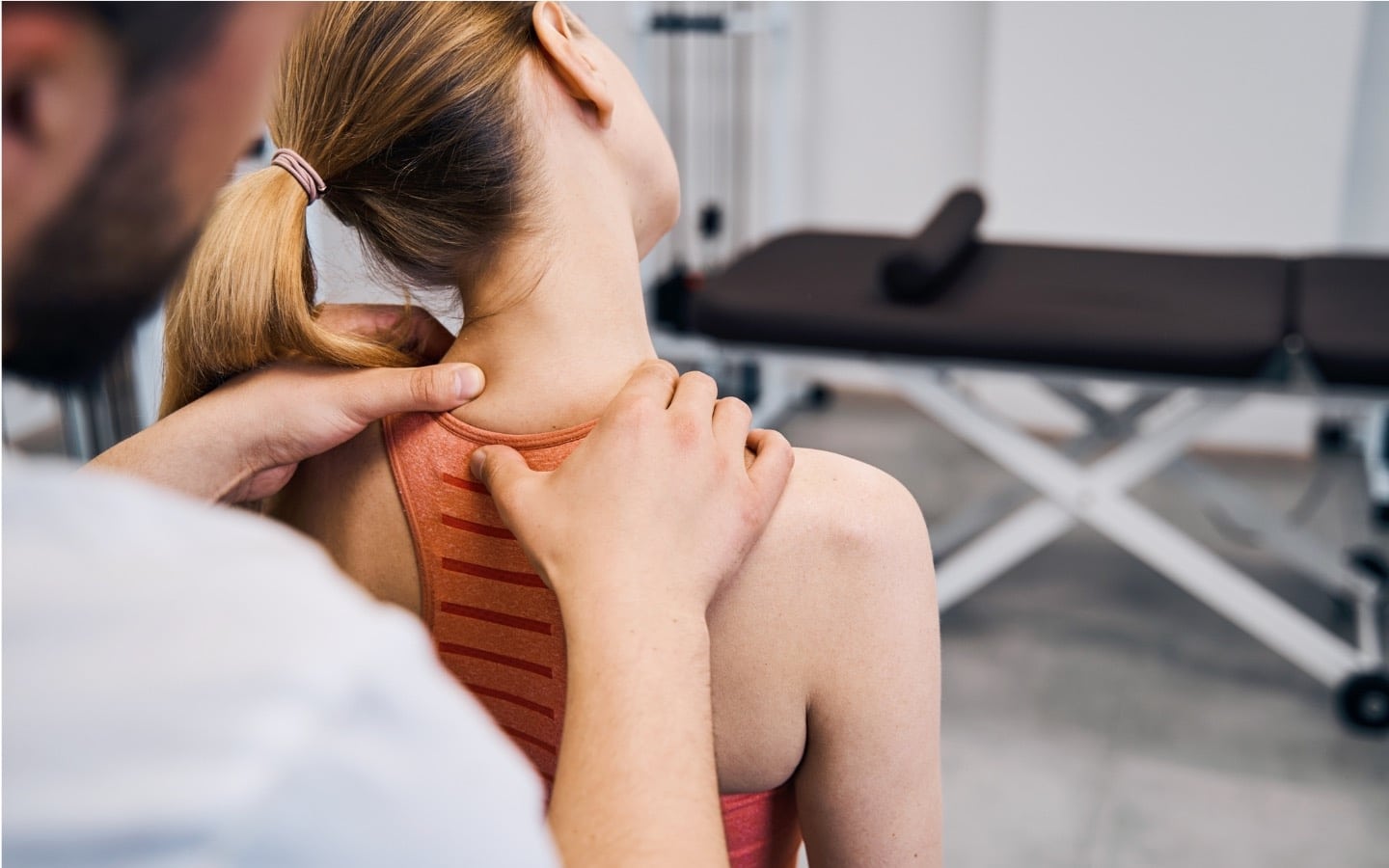
Anatomy Corner: Neck Pain
Neck pain is one of the most common complaints among our adult patients, and it is also a very prevalent ‘side-complaint’ from patients who are in PT to address an entirely different issue!
The American Physical Therapy Association’s clinical practice guideline (CPG) for neck pain identifies several categories: Neck pain with mobility deficits, neuromuscular control issues, neck pain with associated headache, and neck pain with associated radiating pain (1).
Because neck pain is complex and very individual, the major takeaway from the CPG is to get an evaluation from your PT to classify and determine a safe course of treatment for your neck pain, but DEFINITELY see your PT and/or your doctor if:
- Your neck pain is associated with headache onset
- Your pain radiates down one or both arms
- You are experiencing neck pain following a fall, car accident or other trauma
All that said, if you are experiencing neck pain that worsens throughout the day or tends to crop up more when you notice yourself slumping, hunching, or bracing yourself in the cold, a recent study can offer some new insight into relieving this kind of pain.
While numerous studies have proven that manual work by a physical therapist (including soft tissue work, myofascial release, manual stretching and gentle mobilization) is effective at increasing range of motion and improving pain and function (1, 2), a recent study looked at the effectiveness of an active approach. This comprehensive review (3) compared different forms and dosages across 68 relevant clinical trials.
The exercise interventions found to be effective at reducing chronic neck pain and disability, when compared with control groups (who did no exercise or different exercise), were:
- Resistance, including any exercise aimed at increasing strength, power, or endurance of neck musculature
- Motor control, including any exercise aimed at improving coordination or recruitment of neck stabilizing muscles
- Mindfulness-based, including yoga, pilates, tai chi, and qigong
More specifically, mindfulness-based exercises were more effective for pain relief, while motor control exercises were more effective at reducing disability. Increasing duration and frequency of motor control exercise correlated with more effective pain relief.
Long story short: this review consolidated clinical trials from the past several years, all testing active interventions for neck pain, and was able to identify the most effective ones. Because ‘neck strengthening’ exercises are rarely included in everyday gym workouts (and because proper form/alignment can be difficult at first), your PT can compile a safe and manageable exercise program tailored to your neck pain. In the meantime, guided movement aimed at fostering mind-body connection has also been proven to help with chronic neck pain, so consider getting out your yoga or Pilates mat or attending a tai chi class for a compound effect!
By Aubin Sullivan

